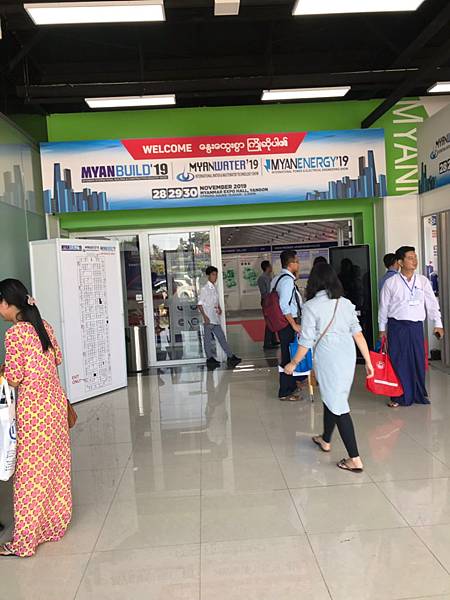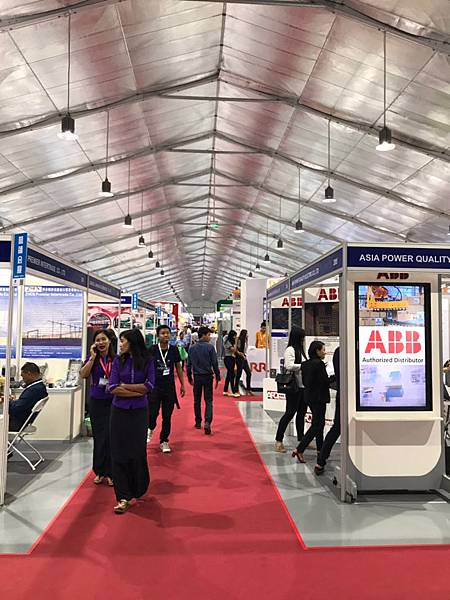Myanmar – The market survey report of water purifier
I have been following the Foreign Trade Associations in Yangon, Myanmar and Mandalay from the time the Myanmar market started to heat up in 2010. I did this because I wanted to take a closer look at this developing country to see if there were any business opportunities. In addition, I have been to the Yangon water treatment exhibition several times and have also gone, by myself, to visit several potential customers. I have done this no less than five or six times but have never had any success.
[1] National income vs. inflation
The average monthly national income in Myanmar is about US$ 120. In 2012, a mobile phone SIM card cost US$ 100 (at the time, people in Myanmar liked to collect US dollars, and most shops would accept both US dollars and the Myanmar (Burmese) kyat MMK).
Businessmen from all over the world are now rushing to Myanmar for the gold there, making it too late to build 5-star hotels, so it is really hard to find a room. The price of a room can be US$ 300. I stayed at the 5 Star Pan Pacific Hotel in Yangon in 2019, where the rate had dropped to US$ 100, showing the big difference.
In 2012, The Wi-Fi network in Myanmar was been developed and only hotels provided it. Ordinary company lines provided immediate Wi-Fi, but the reception was not good.
[2] The opening of the market
Cars began to be imported in 2012, with the number doubling within a few years. 90% of the people buy Japanese used cars and trucks, with the steering wheel on the right. The strangest thing in Myanmar is that they drive these used cars, with their steering wheels on the right, on the right-hand side of the road.
When I visited Yangon in 2012, I did not see any expensive cars, or establishments such as McDonald's, KFC, or Starbucks. However, when I visited again in 2018, I saw imported European cars on every street, and designer clothing and bags were on display in high-end shopping malls.
[3] The problems of power shortages in Myanmar
Six or seven years ago, Myanmar's national public construction infrastructure was unable to keep pace with the country’s economic development. Power outages were commonplace, and each store had its own generator, located in front of the premises.
Yangon had a countless number of blackouts on a daily basis, all without warning. Even at customs clearance in the airport you had to wait for an hour. This was not because they were slow, but because the power cut off randomly, between every few minutes and every ten or twenty minutes. The customs computers were, of course, unable to operate without power. However, when I visited Yangon in 2018 the bad impression from Myanmar’s power outages had gone. "Myanmar" = "free electricity" and almost all of the spare generators in front of stores had been removed. On my most recent (November 2019) visit to Yangon, it was refreshing to get off the plane and experience the brand-new modern airport.
[4] Yangon and Mandalay Market News
People in Myanmar like cheap goods. Most products come from the Chinese mainland and are imported to Yangon via the Yunnan border, which saves some shipping costs ... making Yangon a transfer center. Additionally, about 80% of Mandalay's daily necessities come from the Chinese mainland; Mandalay is located on the border with the mainland of Yunnan, and it is easy to smuggle imported goods and save tariffs.
I visited Myanmar in 2012 and 2013. The changes I have seen since then are the same as those in mainland China 30 years ago and are continually changing on a daily basis. As long as they work hard, there are opportunities for development everywhere and young people can consider moving here if they want to progress.
[5] Overview of Water Treatment in Myanmar
- According to the Aekar Company: imported water purifiers from Taiwan incur a 7.5% import tax, while another local import company said that the import tax for imports from mainland China or Taiwan is 15%.
- According to overseas Chinese importers in Yangon, about 40% of residents in Myanmar still have no electricity, so they could not use RO water purifiers, even if they were to purchase them.
- Most residents of Yangon and Mandalay buy and use bottled water for drinking. A 20-liter barrel of drinking water costs 350-500 Myanmar Kyats (about 10-15 Taiwanese dollars)
- I took a pressure tester to Myanmar to test the local water pressure but was unable to measure it because there was no water pressure. The tap water in the city did not have any chlorine added to it. The first time I visited Yangon in 2012, I still remember the name of the hotel I stayed in: Orchid Hotel, where I used a transparent glass to check the bath water. The color was orangey yellow and was actually even more yellow than the waters of the Yellow River.
- Regarding Groundwater Quality in Yangon, TDS is about 3700PPM, while the TDS of tap water is about 30-200PPM.
- In Mandalay (the second largest city in Myanmar) the best-sellers are 10” and 20" transparent filters. Bottles have two sizes of inlet and outlet: ¾” and 1", and the filter core can be matched: PP pre-filter or GAC granular activated carbon or CTO block or resin.
- People's water consumption for daily use is 50 Myanmar Kyat per unit (about NT$ 1.7)
[6] Myanmar Water Treatment Exhibition
There is a water treatment exhibition in Yangon, Myanmar almost every year, called the name water treatment exhibition, but the scale is quite small, with only single-digit water treatment manufacturers attending. This water treatment exhibition is combined with an energy and a building materials exhibition and is therefore an exhibition where different products are displayed together.
The location of the exhibition takes place in tents and is not located in one place, moving every year.


[7] Conclusions
Looking towards Myanmar as a water purification equipment market, it is obvious that it will take a long time for the country to develop into a vibrant market: The reasons for this are as follows:
- The average national income is too low. People are happy to eat and drink but buying a water purifier is a luxury for them. Selling to the top customers of the pyramid is a limited opportunity.
- There is no sign of vigorous promotion and missionary work from manufacturers. For people to accept the concept that drinking water needs to be filtered, education and publicity are needed.
- The market in Myanmar is unlike those in China and Vietnam. China has developed rapidly in just 30 years, and income has increased rapidly. Moreover, manufacturers of water purification equipment now occupy first place in the world and major international brands have already entered the Chinese Market, and manufacturers do their best to advertise. In Vietnam the annual income of nationals (US$ 6,450 - 2017 data) is not as high as that in mainland China (US$ 9,732 - 2018 data) but is very close. In addition, Vietnamese people are diligent and strive to make money to improve their lives. Vietnam also opened its market earlier than Myanmar with Foreign investment coming earlier and being longer term in nature. Vietnamese have strong abilities in counterfeiting, and a relatively large number of them start their own businesses. The backgrounds of most of the local importers include long established factories to produce other different products. Importing from Taiwan, they are able to open up parts and, with low entry barriers for mold production, will soon replace Taiwanese manufacturers. The most typical representative manufacturers in Vietnam are:
- KoriHome
- Tecomen
- TANA
- Kangaroo
- Picenza
Written by: Rodger Lin (Easywell Water Purification)
You are welcome to reprint this article, but please cite the source
November 2019